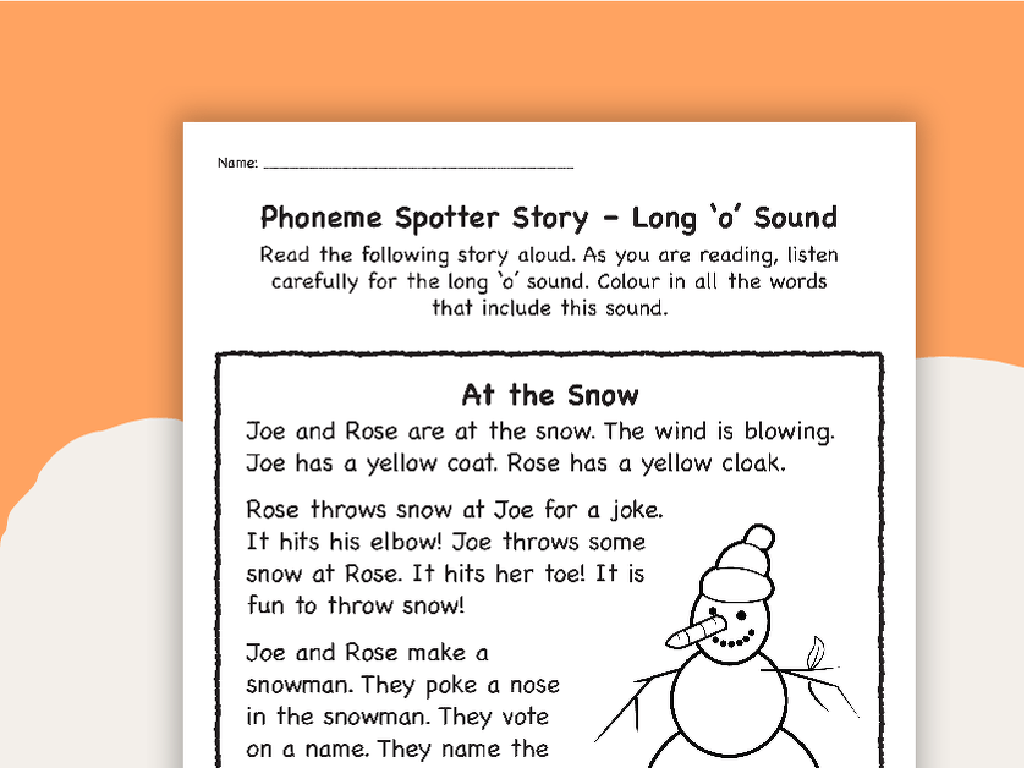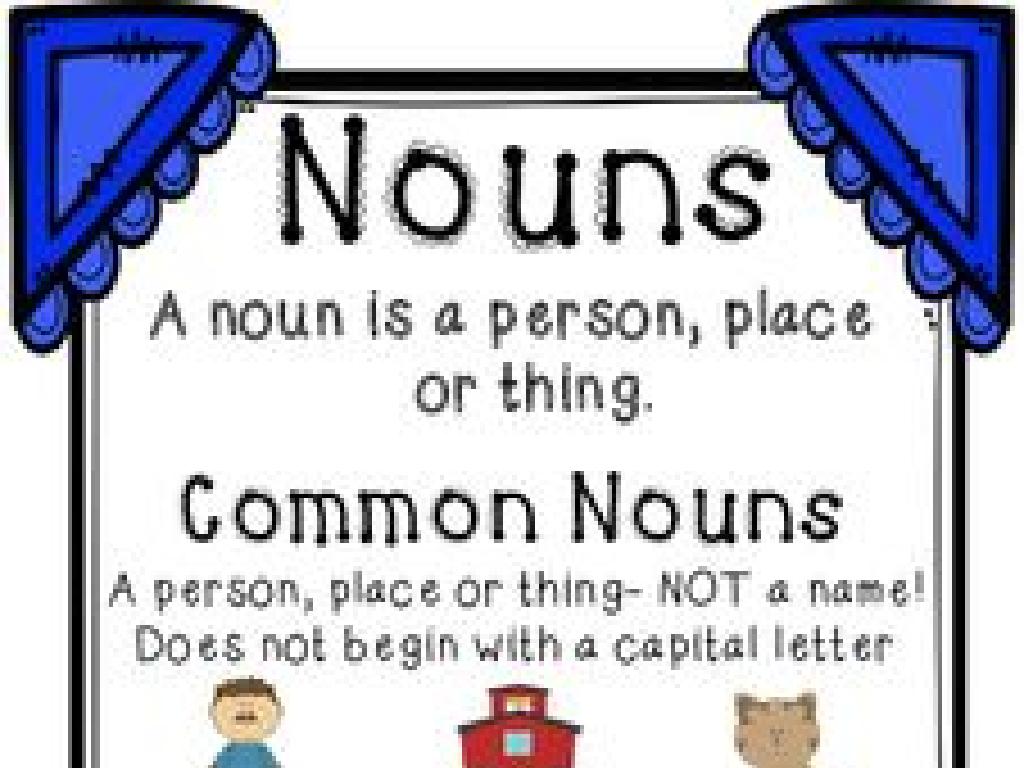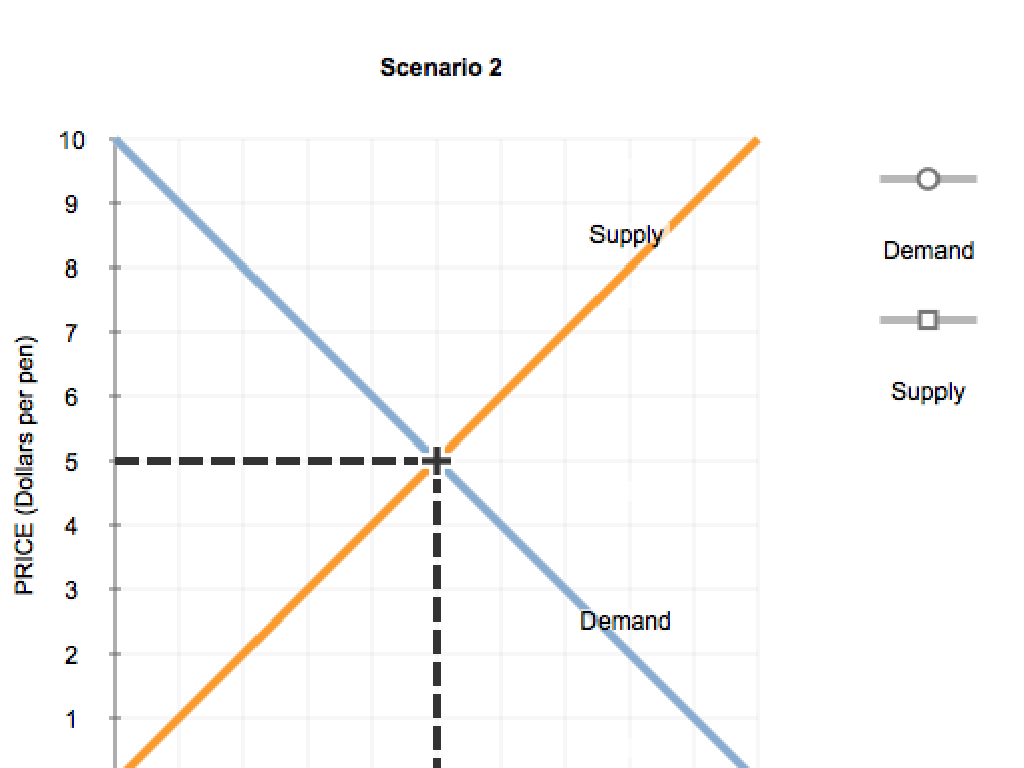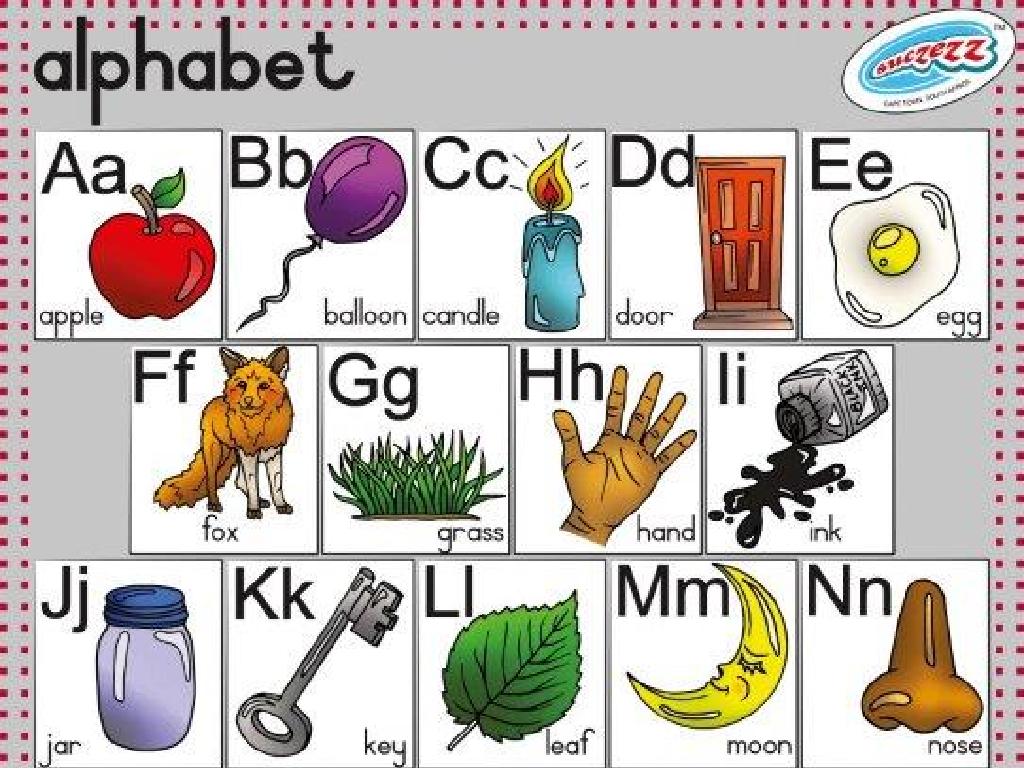Learn To Skip-Count By Tens
Subject: Math
Grade: Kindergarten
Topic: Counting By Tens
Please LOG IN to download the presentation. Access is available to registered users only.
View More Content
Welcome to Counting by Tens!
– Greet our little mathematicians
– Introduce fun counting by tens
– We’ll count in a new, exciting way!
– Counting by tens is like number hopping
– Imagine hopping on numbers: 10, 20, 30, and so on
– Practice skipping numbers together
– Let’s try counting by tens as a group
|
This slide is designed to introduce Kindergarten students to the concept of skip-counting by tens. Start with a warm greeting to engage the children and create a welcoming learning environment. Explain that counting by tens is a fun and quick way to count, which can be visualized as hopping from one number to the next in increments of ten. Use physical movements like hand-hopping to demonstrate the concept, making it interactive and enjoyable. Encourage the students to participate by counting aloud together, reinforcing the concept through repetition and group activity. The goal is to make them comfortable with the pattern of counting by tens and to recognize the sequence of tens in numbers.
Hop, Skip, and Jump with Numbers!
– What is skip-counting?
– Skipping over numbers in a sequence
– Skip-counting by tens
– Instead of 1, 2, 3, we count 10, 20, 30…
– It’s like number hops!
– Imagine hopping on every tenth stone
– Practice makes perfect
|
This slide introduces the concept of skip-counting to Kindergarten students, making it relatable by comparing it to hopping over stones. Start by explaining that skip-counting is a way to count faster by ‘jumping over’ some numbers. Specifically, show how to skip-count by tens, which is a fundamental skill in understanding the base-ten number system. Use physical movements, like hopping, to engage the students and make the concept tangible. Encourage them to practice skip-counting by tens with you, and prepare some activities where they can apply this skill, such as counting objects in groups of ten or using a number line.
Let’s Skip-Count by Tens Together!
– Start at 0 on the number line
– Hop and count to 10
– Say ’10’ as we land on it
– Next, jump to 20
– From 10, we hop to 20 together
– Practice counting by tens
– Keep hopping by tens to practice
|
This slide is an interactive class activity designed to help Kindergarten students learn to skip-count by tens using a number line. Begin by showing a number line on the screen or board. Guide the students to start at 0 and make a ‘hop’ to 10, encouraging them to say ’10’ out loud as they land on it. Then, continue the process by hopping from 10 to 20, and so on, each time saying the number out loud. This activity helps students visualize the concept of skip-counting and reinforces their understanding of number sequences. For the activity, consider having students physically hop in place for a kinesthetic learning experience. Additionally, you can use props like a floor number line or have students draw their own number lines to follow along. The goal is to make the learning process fun and engaging.
Counting by Tens with a Song
– Sing along to learn counting by tens
– Follow and count: 10, 20, 30… to 100!
– Counting in a melody: ‘Ten, twenty, thirty, forty, fifty, sixty, seventy, eighty, ninety, one hundred!’
– Music makes remembering numbers fun
– Practice the pattern with a catchy tune
– The tune helps us memorize the sequence of tens
|
This slide introduces a musical activity to help Kindergarten students learn to skip-count by tens. The song provides a rhythmic and auditory tool to make the counting sequence easier to remember. Encourage the students to sing along and use their fingers to count as they go. The repetition of the song will reinforce the numerical pattern. As an extension, you can have students clap on each count, or even stand up and sit down to incorporate movement into the learning process. This multisensory approach caters to different learning styles and makes the activity more engaging.
Hands-On Practice: Counting by Tens with Blocks
– Count by tens using blocks
– Each block equals ten
– How many for fifty?
– If one block is ten, we need five blocks to make fifty.
– Build a ten-block tower
– We’ll stack blocks to see tens visually.
|
This slide is for a hands-on activity where students will use physical blocks to learn skip-counting by tens. Each block will represent the number ten, and students will be asked to determine how many blocks are needed to reach fifty, reinforcing the concept of counting by tens. Afterward, the class will engage in a collaborative activity to build a tower with the blocks, providing a visual and tactile representation of the numbers. The teacher should prepare enough blocks for the activity and guide the students through the process, ensuring they understand that each block addition represents a jump of ten. The teacher can also prepare variations of the activity, such as using different colored blocks for different sets of tens or having students work in small groups to build their towers.
Counting by Tens with Objects
– Count objects in groups of ten
– Pencils, erasers, stickers grouped by ten
– Calculate total in 5 groups
– If one group has 10, five groups have 10 x 5 objects.
– Understanding skip-counting
– Skip-counting by tens helps us count quickly!
|
This slide is designed to teach Kindergarten students the concept of skip-counting by tens using tangible objects like pencils, erasers, and stickers. By grouping these items in sets of ten, students can visually see the groups and understand that each group represents ‘ten’. When asked how many objects there are in five groups, they can practice skip-counting by tens to reach the total (10, 20, 30, 40, 50). This exercise not only reinforces their counting skills but also introduces them to the basics of multiplication. Encourage the students to count aloud together and use their fingers if necessary to represent each group of ten. This interactive approach will help solidify their understanding of the concept.
Class Activity: Ten Frame Fun
– Understand a ten frame
– A ten frame has 2 rows with 10 spots each
– Fill ten frame rows
– We’ll place objects to fill each spot
– Count rows to reach 50
– Count the filled rows by tens to add up
– Group activity participation
|
This activity is designed to help Kindergarten students visualize the concept of skip-counting by tens using a ten frame. A ten frame is a simple visual tool that has two rows of five to help children count by grouping. Instruct the students to fill up the ten frame with counters or drawings, and then count the number of filled rows by tens. For example, one full row is ten, two full rows are twenty, and so on, until they reach fifty. This hands-on activity will reinforce their understanding of counting by tens and provide a foundation for basic arithmetic. Prepare different sets of ten frames and counters for the students to work in small groups, and encourage them to help each other. This will foster teamwork and collaborative learning.
Great Job Skip-Counting by Tens!
– Celebrating our counting by tens
– Skip-counting makes counting quicker
– What’s after 70 in tens?
– If we add ten to 70, we get 80!
– Practice makes perfect
– Keep practicing counting by tens at home
|
This slide is meant to conclude the lesson on skip-counting by tens. Start by praising the students for their effort and success in learning to count by tens. Reinforce the concept that skip-counting is a faster way to count large numbers. Engage the class by asking what number comes after 70 when counting by tens to assess their understanding and to encourage participation. Remind them that practice is key to mastering this skill and encourage them to practice at home. You can also suggest counting items in tens, like toys or snacks, to make the learning process fun and practical.
Let’s Play a Game: Counting by Tens!
– We’re playing a skip-count game
– Roll the dice and count by tens
– If you roll a 3, count: 10, 20, 30 and move!
– Move your marker on the board
– Each spot on the board is a ten
– First to 100 is the winner!
|
This interactive game is designed to help Kindergarten students practice skip-counting by tens in a fun and engaging way. Set up a game board with spaces marked in increments of ten up to 100. Provide dice for the students to roll. When a student rolls the dice, they will count by tens according to the number rolled and move their marker accordingly. For example, if a student rolls a 4, they move 40 spaces (10, 20, 30, 40). The goal is to reach 100 first. This activity reinforces number recognition, counting skills, and the concept of skip-counting by tens. It also introduces basic game mechanics and fair play. Prepare variations of the game for different skill levels, and ensure to guide and encourage students as they play.






